
National
Skydiving
League
226 Pecan Street
Deland FL 32724
tel: (386) 801-0804
© 2003 - 2025
All Rights Reserved


226 Pecan Street
Deland FL 32724
tel: (386) 801-0804
© 2003 - 2025
All Rights Reserved

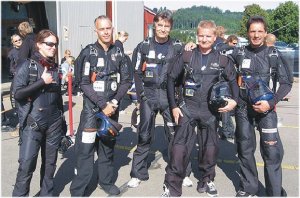
The new X-Ray Remscheid lineup with, Uli Sehrbrock in the Center Outside slot, managed to put some heat on Germany's reigning 4-way champions of FSC Eisenach last year and challenged the national champions seriously at the DFV Cup 2008. X-Ray is already in full training swing for the 2009 season and plans to push even harder for the top spot in Germany's 4-way rankings.
Uli Sehrbrock is an engineer in his other life and has been running his own engineering firm in Braunschweig successfully for many years. He is also teaching randomly at the University of Braunschweig. This connection began to move into a new direction when the passionate 4-way competitor and canopy pilot thought about a new way how to use sophisticated engineering technology in his skydiving environment.
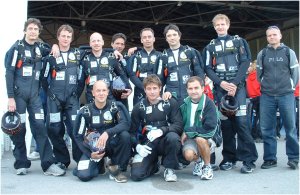
The efforts by the small group have recently been supported by another experienced German skydiver and former 4-way competitor, Pitt Weber, who trained and competed with the German national team of many years, Daedalus. Pitt Weber is one of the most experienced riggers and equipment experts in Germany and became interested in Uli Sehrbrock's CATE project.
Eventually, the first results of the project have now become tangible, and the German skydiving federation (DFV) has officially begun with a promising cooperation. Last month's issue of the German skydiving magazine "Freifall Xpress" published the story of the project. Goal is to publish the first official test results of different parachutes soon and on a regular basis. Dr. Ulrich Sehrbrock provided the NSL News with a description of CATE:
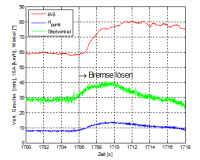
Alright, this was admittingly a provocative introduction. Of course, we try to inform ourselves as much as possible before we buy our next parachute. However, there is still a lot of truth about the lack of hard data that we have available. Our decision is mostly based on guesses, estimations and feelings, like: flies really well, very agile, aggressive, flares nicely, opens softly/hard openings, feels like a lame duck, etc.
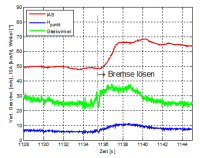
For instance, I found it very impressive to find out that I was traveling with an air speed of 60 km/h after opening with unreleased breaks. Okay, I am flying a 97 sq.ft. parachute, however, it still seemed faster than I thought. The air speed went up to even 80 km/h after releasing the breaks. So I switched to a more popular 120 sq.ft. canopy, and the air speed was still at remarkable 50 km/h in breaks and 65 km/h after releasing the breaks. And I am surely not a heavyweight... The 1 : 2 rate of descent (1 meter descent and 2 meters distance) was significantly steeper than I ever thought.
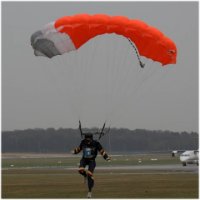
Next step is to optimize the hardware as of setup, size, weight and general handling. Other helpful components, such as measuring devices for steering direction and steering effort, will be added during this phase. At the same time, the software program that evaluates and visualizes the data will be specified and modified to accommodate the testing of parachutes.
This equipment will allow to measure not only speed and rate of descent but also speed and degrees of turns, the swinging momentum of the jumper under the parachute in all directions and any forces during turns, which can easily exceed 2 g. The opening of the parachute is a part of this measuring, as well. The complete system is called „CATE“ (Canopy Test Equipment), and it will accurately measure all flight characteristics plus opening behavior and provide hard data for objective evaluation. The data will also allow to compare different parachutes directly with each other. It will help to know your own equipment much better, which is a nice side effect.
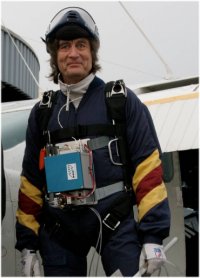
- Air speed (in breaks and released) - Rate of Descent - Gliding angle - Stalling speed - Turning speed - Descent rate during turns - Acceleration during turns - Stabilizing after turns - Flaring behavior
That’s the plan that we would like to introduce at the moment. We hope that the skydiving community has enough interest to support this project („Driving Test for Parachutes“).
We need your feedback, and we need financial support since the development of the technology and the actual tests of the parachutes costs money. It is our goal to produce new data and information and publish it on a regular basis. The German skydiving federation already supports the project with technical information and sanctioning. However, the financial burden is still on the shoulders of the creators so far.
Uli Sehrbrock / Harry Kloska / Pitt Weber